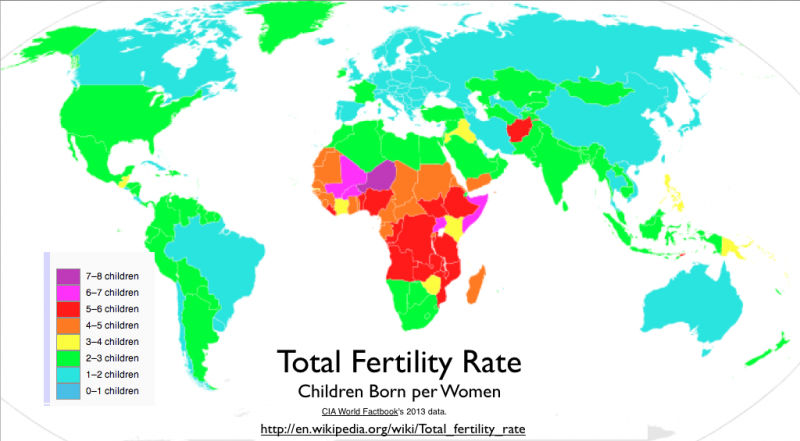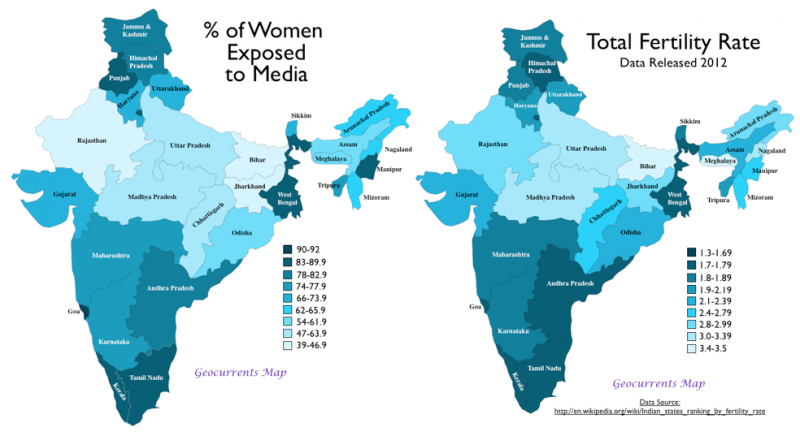“I find it extraordinary that the massive global drop in human fertility has been so little noticed by the media,” writes Stanford geographer Martin Lewis, “escaping the attention of even highly educated Americans.”
Lewis has a fascinating,
chart-heavy essay
over at the Breakthrough Institute pointing out that birthrates are
dropping rapidly almost everywhere around the world — with the
exception of sub-Saharan Africa, mostly. Here’s a map of the current
state of affairs:
One notable bit here is how many developing countries now have lower birthrates than even some European nations. “Chile (1.85 children per woman), Brazil (1.81), and Thailand (1.56) have lower birthrates than France (2.0), Norway (1.95), and Sweden (1.98),” Lewis writes.
The same goes for India.
Back in 1968, biologist Paul Ehrlich
famously warned
about a coming population explosion in India that would lead to mass
famine and catastrophe. Yet today, India’s fertility rate (2.5) is
only slightly higher than the United States’ (2.1). In India’s
southern states, the birthrate is actually below replacement level,
meaning that the next generation will be smaller than the current
one.
So what happened? Lewis examines a number of hypotheses, from rising incomes to growing female literacy. Those are all moderately correlated with the decline in birthrates and could help explain the shift. But, curiously enough, nothing seems to match up with the trends as neatly as the growth in TV ownership and media exposure:
This isn’t as bizarre as it seems. A 2009 paper (pdf) by Robert Jensen and Emily Oster found that the introduction of cable television “is associated with significant decreases in the reported acceptability of domestic violence towards women and son preference, as well as increases in women’s autonomy and decreases in fertility.” It’s far from certain that television alone is driving these changes, but the evidence is suggestive.
A separate 2008 study (pdf) by Eliana La Ferrara found that the popularity of soap operas seems to have had a similar effect in Brazil, where birthrates have dropped from from 6.25 to 1.81 in the past 50 years. The idea here is that television helps alter certain cultural norms that, in turn, lead to women choosing to have fewer kids. (Again, though, it’s possible that soap-opera exposure is simply an outgrowth of some other factor, like rising incomes.)
In any case, this is a story with big implications. Environmentalists have long warned that if the global population keeps soaring — we’re at about 7 billion right now — that’ll put a huge strain on the Earth’s natural resources. But in much of the world, the population is no longer soaring. And, if the soap-opera hypothesis is correct, birthrates in places like Africa might end up dropping far more rapidly and easily than anyone expects.
Further reading:
—
How to fit 7 billion people on the planet.
Note that a 2010 paper found that slowing population growth could
provide “16-29% of the emissions reductions suggested to be
necessary by 2050 to avoid dangerous climate change.”
— Also note that falling birthrates aren’t inevitable. In Egypt, birthrates appear to be rising again as the new government gets rid of various family-planning services.



